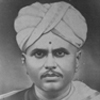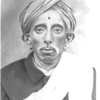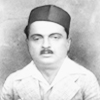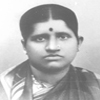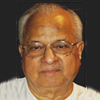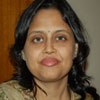About Sonde Family
My family belongs to Gauda Sarasvata Brahmin community having migrated from the city of Lotli in Goa, which was an important trading centre as well as the original place of the temples of Ramanath, Shanteri and Kamakshi and indigenous deities like Betal and Gramapuusha etc. with an important town Verne nearby and Kushasthali where Parashurama had established first of the settlements. The Kulavis or the devotees of these temples belonged to Kaundinya and Kaushika Gotras. With the promulgation of 30th June 1541, destruction of Hindu temples was taken by the Portuguese. The temples of Sri Ramanath and other deities in Lotli in 1567 were set on fire. Hindus shifted the temple from Lotli to Bandivade, in Antruj Mahal which was then under the control of Sonda kings.
Consequent to the forcible conversion of the Hindu to Christian religion which commenced with Portuguese rule in Goa from 1540 A.D. many Hindu families migrate to safe havens along the western coast of India to Kanaras reaching down to Kerala. Some of them to Kumata and Honavara in North Kanara district, under the leadership of a prominent persons like Ganesh or Vinayaka Malya. While Malya opted to go the royal court at Keladi, where he became successful administrator. The Keladi ruler Shivappa Nayak was impressed by Ganesh Mahale, who proved his worth, soon to be elevated to the position of a minister.
Some, primarily engaged in agriculture stayed in Kumata and Honavara, a branch left to Sonda a principality under the Vijayanagara empire. To this branch my ancestors belonged.
The dynasty of Sonda which was founded by Venkatapati Rajendra came in prominence under Arasapa Nayak (1555 - 1593), followed by Ramachandra Nayak (1598 - 161) Raghunath Nayak (1618 - 1638) and Madhulinga Nayak (1638- 1674). They used to trade with Portuguese for Guns, armaments and horses in exchange of rice, pepper and cardamom, in which transactions, Sarasvats played important part as brokers and agents. Therefore many Sarasvat merchants who had close contact with the rulers, settled in Sonda after emigration from Goa. Members of Sonde family continued as traders in Sonda as well as as keepers of records collecting cess, levies and taxes for the rulers and as agents in commercial negotiations with others. This helped them to have important status in society.
The Members of the ruling family in Sonda valued the role of Sarasvats along with others like Lingayat and Haviks. “Shivaji-Mallmmaji Samarotsva” a book was published by Shesho Srinivas Mutalik, an officer of Belvadi State in Bailhongal Taluka of Belgaum District. The book was written at the instance of Rani Tarabai of Kolhapur, from which we find that as many as 100 Havik Students, 100 Sarasvat students apart from Lingyats were studying in the school which was established exclusively for royal household. Mallammaji having studied along with Havik and Sarsvats, some of whom might have have belonged to erstwhile Sonde family.
After Mallamaji married Ishaprabhu the prince of Belvdi state, her contacts with her erstwhile co-students did not diminish. Many of them seems to have patronised by her, which accounts the reason why some ancestors of Sonde family held agricultural lands even in distant places like Sholapur, Dharwar, Yellapur, Mundagod, Karwar, Honavar which were in some manner or the other connected with the rulers of Sonda as well as in Sorab and Sagar which were under the Keladi rulers. This gave Sonde family added in the society.
After the defeat of the rulers of Keladi or Bednur and of Sonda by Haider Ali in 1763 and the then Savai Immadi Sadashiva Nayak of Sonda fled to Bandivade in Goa taking shelter under the Portuguese and ceding territories to them.When the English defeated and killed Tippo Sulan, the territories in Kanaras came under the control of the English rule.
This was the watershed in the family fortunes of Sonde family. They lost influence in the state administration but their influence in trade and commerce still remained. Under Sonda rulers, Sirsi was a small outpost under the Sonda rulers acquired commercial status. When it came under British control, under instructions of Marquis of Welllesly, Dr Francis Buchanan travelled extensively in the territories of Madras, Malbar and Canara to report the economic and political situation.
When Dr. Buchanan visited Sersi or Sirsi on 14th March 1801, it was still a village, though an important trading centre with a garrison under the control of Tehsildar of Sonda ruler, ‘on account of its being a great thorough fare and as having a very considerable custom house’. The visits to Sirsi was fraught with danger due to the uncertain post-Tippo period. The visits were infrequent and too cumbersome due to bad roads and uncertainty due to robbers on the roads. Buchanan remarks “Few or no merchants reside in Sonda. Those from below the ghats come and purchase little pepper; but by far the greatest part of this article and all betel nut and cardamom are bought up by the Banijigas (Baniyas) who come from Hubuli, Dharwara, Haveri or Havely and Umanabady and Marrattah dominions”. Buchanan records, “It is not centrical for the whole (Kanara) district, but is chosen on account of being a great thoroughfare and as having a very considerable custom house. It has a small mud fort in which nobody resides . . . Near it are are the ruins of a fortress, which was built by Ramachanra Nayak the second Prince of the last dynasty. It is called Chinnapattana . . .” Sersi at that time contained about 700 houses. He further says that “From a garden on the west side of Sersi the Salamala, or Gangavali river takes its rise; and on its east side a Tank called Aghanaashini, issues a river of the same name . . .” Sonde family was familiar with the place even before the first of the family member migrated to Sirsi.
As Buchanan remarks at that time, agricultural lands were owned by Haiga Brahmins, who cultivated them by their own or hired labour. He distinguishes them from Sarasvat Brahmins whom he refers as merchants and traders. They are referred as ‘Kankana Brahmans’ and speaking of the Sarasvat Brahmans of Ankola, he says “Most of the people here are of Karnata descent and few of Kankana descent remain, except a particular kind of Brahmans, who are all merchants, as these of Haiga are all cultivators. Being originally descended from Pansch (Pancha) Gauda or Brahmanas of the North of India, those of Kankana are held in great contempt by the Dravid Brahmns, or division of the south ; one of the strongest of the reasons assigned is, that they eat fish”.
The main activities of the ancestors of Sonde family being trade were apart from their administrative duties of the state, as tax collectors, intermediaries between foreign merchants and locals, the distance between trade and money lending was soon breeched. With other activities having lost their primacy, the family commenced financing the agricultural activities of Haviks when the loans were not repaid their agricultural properties came to be attached. This is how Sonde family came to be agricultural landholders. Their control of the economy, production as well as the trade made them important status in the society.
Their position in Sonda, as Tax Collectors in the Court administration gave them the additional designation as ‘Tookadars’, which was continued to be use d by some members of the family even as alte as early quarter of twentieth century. The designation obviously gave them social status and prosperity.


